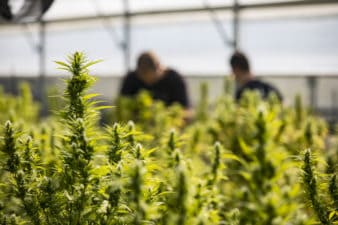Cannabis investors have seen a sharp decline in portfolio value in the last 15 months. Most marijuana stocks including OrganiGram Holdings (TSX:OGI)(NASDAQ:OGI) are trading well below their record highs.
Shares of OrganiGram are currently trading at $2.31, which is 78% below its record high of $9.5. However, despite this massive pullback, early OGI investors have still enjoyed tremendous gains. For example, if you invested in OGI stock five years back, it would have been worth $2,875 today.
This also means the stock gained a staggering 2,500% between June 2015 and May 2019. However, past returns matter little to perspective investors. What they need to know is whether OGI remains a top pick for the upcoming decade.
OrganiGram sales fell in Q2
OrganiGram announced its fiscal second-quarter results in April and reported sales of $23.2 million, a year-over-year decline of 14%. Its net loss widened to $6.8 million, up from a loss of $6.4 million in the prior-year period.
Company sales from the recreational market were down 39% year over year. In the first two quarters of fiscal 2020, the company’s total sales were up 23%, while recreational sales fell 17%.
Similar to most other companies, OrganiGram is also grappling with low liquidity metrics. It ended Q2 with a cash balance of $41.2 million, compared to the $47.9 million figure at the end of fiscal 2019. While OrganiGram’s biological assets and inventories rose 24% to $140 million, its working capital declined 37% to $96.75 million.
What’s going right for OGI?
OrganiGram is banking on Cannabis 2.0 products to drive sales in the next two quarters. In the quarter ended in February, OGI’s cannabis-infused edibles and 2.0 products accounted for 13% of sales and this figure should move higher. The reopening of retail stores, after countrywide lockdowns should also drive recreational sales upward.
OGI recently announced its largest international partnership to sell 6,000 kilograms of cannabis to Israel medical marijuana producer Canndoc.
OGI has a huge presence in Canada’s eastern Atlantic provinces. While most marijuana giants are looking to gain customers in large Canadian cities in Ontario, Quebec and British Columbia, OGI has managed to secure a leadership position in Prince Edward Island, Nova Scotia, New Brunswick and Newfoundland.
One Global News report published in 2019 states that the above-mentioned provinces have a higher-capita consumption of weed compared to the national average. Further, OGI also has supply agreements with all Canadian provinces, allowing it to improve market share over time in other regions.
OGI is well poised to lower costs and improve profit margins due to its multi-tier production facilities. It can grow a considerable amount of pot per square feet compared to the industry average. In order to lower operating costs, OrganiGram reduced workforce by 45% or 400 employees in April 2020.
Analysts tracking OGI expect the company to post sales of $104 million in fiscal 2020, which means it is trading at a forward price-to-sales multiple of just below four.
OGI is a high growth pot stock trading at a cheap valuation and looking to improve profit margins, making it an ideal buy for contrarian pot investors.








